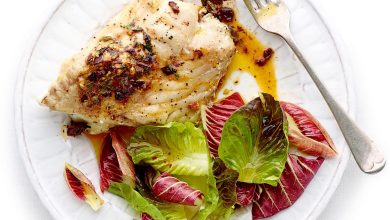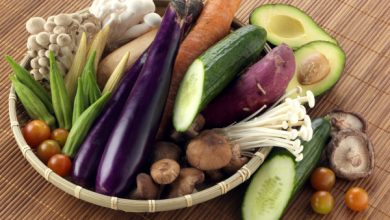Iranian Cuisine
Iranian cuisine has absorbed the features of many cultures over several millennia with the development of history. Iranian dishes seemed to me quite simple, without frills and very satisfying. In this article I will tell you what dishes are worth trying if you are traveling in Iran and what to look for. Read also detailed practical articles:
The country is inhabited by many peoples living in different climatic zones, and therefore the cuisine is regional: on the coast of the Persian Gulf, fish is often present in food, there are many vegetables on the fertile Caspian lands, and in the central deserts you can also taste camel kebab. Well, many have heard about the famous Iranian sweets and dates. I got to try something!
Iranian Cuisine
I was surprised to learn that some Iranians adhere to a certain “hot-cold” culinary philosophy. According to her, all products can be divided into two classes: “hot” dishes speed up the metabolism, and “cold”, on the contrary, slow down. And it’s not the temperature, as you might think initially. All people are also divided into these two types, and a person of a cold type should eat more “hot” food, and a person of a hot type – “cold”.
Somehow it all resembles Vedic cuisine. Hot: all types of meat, except beef, vegetable fats, herbs, nuts, sweets. Cold: rice, fish, vegetables, fruits, beef. So in Iranian dishes you can see just the balance and combination of these two types, for example, chelo-kebab (rice with meat kebab) with herbs, tomatoes and onions.

In general, Iranians eat food more at home than in street eateries, restaurants and cafes, they are not so common. For me, after Southeast Asia, it was completely unusual – there is simply no culture of street food here. Often good inexpensive restaurants are somewhere in the alleys, in basements and with signs only in Farsi.
Ideally, if you are invited to visit, then you can taste something unusual. Main dishes The basis of Iranian cuisine is rice and bread. Rice is called chelo when simply boiled or steamed. And when greens, nuts, barberry berries and other ingredients are added to it, it is already called polo.
Restaurants often serve chelo morgh (chicken with boiled rice) or polo ba morgh (spicy rice with chicken). On the coast of the Persian Gulf, you can often find chelo mahi – fried fish with rice. The cost of such dishes + drink starts from 150 thousand rials ($ 4).
Bread comes in different variations, in general it is called nun (nun). There is the usual thin pita bread, sangak – thicker, pimply, often with flax or sesame seeds.
Kebabs
The most popular Iranian eateries are kebabs. Simple, inexpensive, tasty. Kebab is essentially a barbecue, it comes from different meats. It is served on pita bread or with rice, then the dish is called chelo kebab. In any case, there will be fresh onions, greens, baked tomatoes, sometimes some kind of purple cabbage nearby.
You will also be offered mast – yogurt, which goes well with the main course. Kubide kebab is the cheapest, ground lamb mince. Juje kebab – chicken pieces marinated in sauce. Bakhtiyari kebab – the most expensive, lamb and chicken chops. I usually took a cubide kebab with rice and all kinds of greens for 110-115 thousand rials (about $ 3).
Khoresht This is a vegetable stew with pieces of meat, served with rice or potatoes in different variations: fessenjān with walnuts and pomegranate syrup, ghormeh-sabzi with beans, mint and other herbs. Usually khoresht is eaten like this: they put pieces of lavash on a plate, eat them, which have absorbed the broth, and then eat the remaining vegetables and meat.

Soups Soups are called ash in Iranian. For example, ash reshteh is a vegetarian soup made from chickpeas, noodles, seasoned with various herbs.
Dolma is minced meat with rice and vegetables wrapped in grape leaves. Such a dish is still often found in Armenia. More about Armenian cuisine. Iranian sweets Sweets in Iran are called shirini.
they are very popular among the locals, they still have a sweet tooth 🙂 My favorite is gaz – pistachio nougat with rose water, most of all in Isfahan. Baghlava – our baklava, made from puff pastry with nuts, a hearty thing, there is a lot of this in Yazd.
Pashmak – a ball of thin threads made from flour and sugar, with the addition of pistachios, sesame, Yazd is considered the homeland. Noghl – glazed nuts, popular in the northwest of the country. Sohan – halvah from germinated wheat, pistachios, almonds, egg yolks with the addition of saffron, cardamom, butter, rose water.
The homeland is the city of Qom, which is not far from Tehran. Zoolbia is an Iranian sweet made from wheat flour, ghee, saffron and sugar. It is eaten during the holy month of Ramadan. Falude – “pasta” made from starch and rice flour with sugar syrup.
Ranginak – dates are stuffed with walnuts, and then rolled out in toasted flour with the addition of cinnamon, cardamom, pistachios. Distributed in southern Iran. Bastani – delicious Iranian ice cream with saffron and pistachio pieces. Recommend!
And this is not a complete list of sweets that are sold in abundance in Iranian bazaars. Drinks Alcohol is banned from Iran, so forget about it during your trip. But here, black tea is found in abundance everywhere: in cozy teahouses or in kiosks in parks –
you can always drink this fragrant drink. Iranians first take lump sugar, soak it in a cup, put it in their mouth and then sip the tea through their teeth. Iran-style! In large cities, you can find hipster coffee houses; in the provinces, coffee is not common, only tea.



